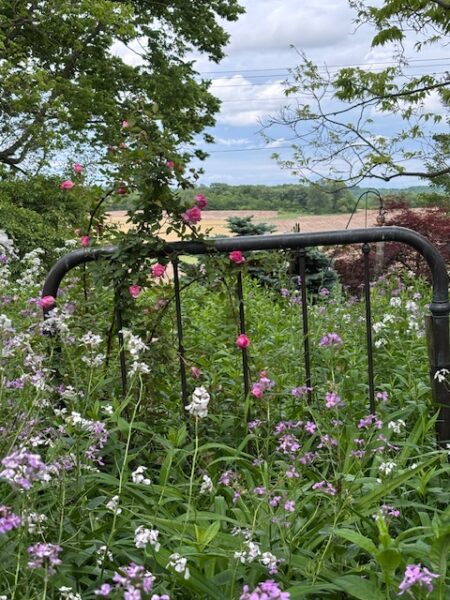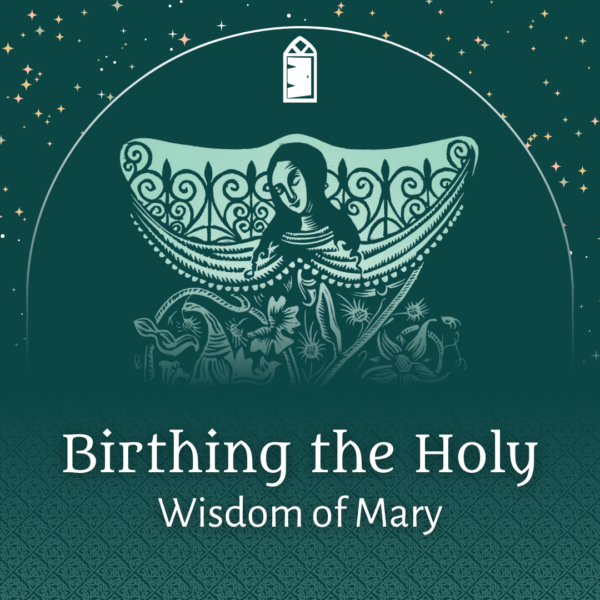 I first met Milton Brasher-Cunningham through the RevGalBlogPals, a blog ring for people who support the leadership of women in Christian communities. I was drawn to his blog ‘don’t eat alone‘ because it’s primarily about one of my favorite topics — food and the way food can be meaningful and sacred. Milton also writes about social justice, about discernment, about poetry, many of the things I feel passionate about as well. Then recently I got an unexpected gift in the mail from him — a copy of his new book Seven Summers at the Beach, a delightful collection of poetry and recipes from his blog put together in a clean and accessible format. I am always thrilled to receive presents, especially one that combines some of my favorite elements and it occurred to me that Milton would make a great subject for my Sacred Artist Interview series as an artist of word and food.
I first met Milton Brasher-Cunningham through the RevGalBlogPals, a blog ring for people who support the leadership of women in Christian communities. I was drawn to his blog ‘don’t eat alone‘ because it’s primarily about one of my favorite topics — food and the way food can be meaningful and sacred. Milton also writes about social justice, about discernment, about poetry, many of the things I feel passionate about as well. Then recently I got an unexpected gift in the mail from him — a copy of his new book Seven Summers at the Beach, a delightful collection of poetry and recipes from his blog put together in a clean and accessible format. I am always thrilled to receive presents, especially one that combines some of my favorite elements and it occurred to me that Milton would make a great subject for my Sacred Artist Interview series as an artist of word and food.
Are you rooted in a particular faith tradition?
I was born into a Christian family that was also Southern Baptist. I turned one on the ship going to Africa, where my parents served as missionaries, and left the continent for good on my sixteenth birthday. During those years I was exposed to Christians of many denominations, many of whom my parents took seriously as colleagues in ministry. As an adult, I have found my home in the United Church of Christ and it’s gospel of extravagant welcome.
What is your primary art medium?
Writing and cooking, though I also find expression in other tactile media: card making, candle making, watercolors. For Christmas several years ago Ginger gave me a class in Byzantine iconography, which was an incredible experience in both art and spiritual practice. I want to get back to that.
How do you experience the connection between spirituality and creativity?
My answer begins with mentioning Parker Palmer’s book The Active Life, which helped give me a vocabulary to talk about the connection. I’ve never been a meditative person – in the sense that I find God by sitting quietly. Palmer says there is an active way to God: being active can also mean being attentive in the same way as being quiet. In this sense, faith is a contact sport for me. I hear God best when I am active and creative.
What role does spiritual practice have in your art-making?
In iconography, the point is to copy the image that has been handed down over the centuries. You follow the same lines as those who have come before you; you don’t sign the work when you are finished. The point is to create a “window into heaven” rather than an individual artistic expression. The lesson has been difficult for me because the language of love I hear best is that of affirmation – I am fed when someone tells me I have done well. What I continue to learn, whether I’m writing a blog post or a poem or working to make the plate about to go out into the restaurant as perfect as I can, is that most meaningful affirmation comes from understanding the connections I’m creating, from being able to see I have created an expression of the love and grace that holds us all.
What sparked your spiritual journey?
I don’t remember a time when I didn’t know that God loved me, so, in one sense, I was born on the journey. The latest chapter in the journey, which has been most significant as far as my artistic life goes, began eight years ago when I began to come to terms with my depression and learning what it means for that to be a part of both my spiritual and physical makeup.
What sparked your artistic journey?
Relationships. I have been blessed with a number of people along the way who taught, encouraged, and challenged me to try my hand at everything from songwriting to cooking to graphic design. My mother is a fearless cook and capitalized on my curiosity to get me to help her in the kitchen. Others along the way responded to my inquisitiveness by being willing to show me how they did what they did. I don’t think one step of my artistic journey has been a solitary one.
Do you have a particular process you use when entering into your creative work?
The ongoing process for me is looking for connections. I like finding ways to draw things together that don’t look like they go together. Beyond that, I don’t have a specific regimen. The biggest challenge in writing is carving out time to do it. When it comes to cooking, I find someone is almost always ready to eat.
How does your art-making shape your image of God?
The first image we see of God in the Bible is that of Creator — The Original Artist – working in every possible medium and creating for the sake of creating. A look at the world around us and we can find functionality, whimsy, passion, brilliance, imagination, determination, focus, tenacity, tenderness, intricacy, expansiveness, love, and a sense of humor. As the children in Narnia are warned, “Remember Aslan is not a tame lion.” I cook and write and paint and whatever else to make meaning of this weary and wonderful world God continues to create. To see God as Creator means, to me, that God’s truest expression of self is one of love and inclusiveness. John described Jesus as “knowing he had come from God and was going to God.” The true is the same for us. We have come from a God who is so full of creativity that God could simply breathe us into being; we are going to a God who is unabashedly Love, Love, Love.
*****
A wholehearted thank you to Milton for sharing his insights. There were many images and ideas here that spoke to me including “the gospel of extravagant welcome”, faith as a “contact sport”, how art and creativity are rooted in all levels through connections and relationship, and God as Original Artist and pure love.
Make sure to visit his blog and check out his new book!
** Make sure to visit this week’s Poetry Party! **




7 Responses
“Faith is a contact sport…”
I think this is a quote that will take root deep inside of me. I love it. What a fabulous way to describe faith. And I have to say, I’ve always felt my art was some kind of active worship, it’s nice to be reminded that I’m not alone in that thinking.
Thanks!
Thanks for all of the warm comments, always a gift to hear what these interviews spark in you too.
Its so wonderful to meet a Chef of Sacred Writing (in word, image, & food!) I love Milton’s outlook on life and his connections he has with God our Creator. I loved Milton’s words, “…to make meaning of this weary and wonderful world…”. Amen! Thank you both for sharing :)
I’m so happy to see one of my favourite bloggers interviewed by another of my favourite bloggers. Food is one of the most sacred of all arts.
Milton, I didn’t realize I belonged to the church of “the gospel of extravagant welcome.” though I did know that “God was/is still speaking!” Thank you for giving more wonderful descriptions of my membership in the UCC!
I so resonate with your descriptions of cooking! My husband and I did so much wonderful cooking together. As i have been ill, I have missed these vastly creative ventures but I described them to my daughter the other day and hope she will follow the family tradition.
The book (and recipes) look delicious! Thanks Milton and Christine for brightening my world.
Great interview! I love Milton’s insights…thank you so much for sharing.
I just love this guy! Thank you so much for the brilliant interview. His recipes will be on my family menu (and church menu too – the spicy chicken and rice looks soooo good).